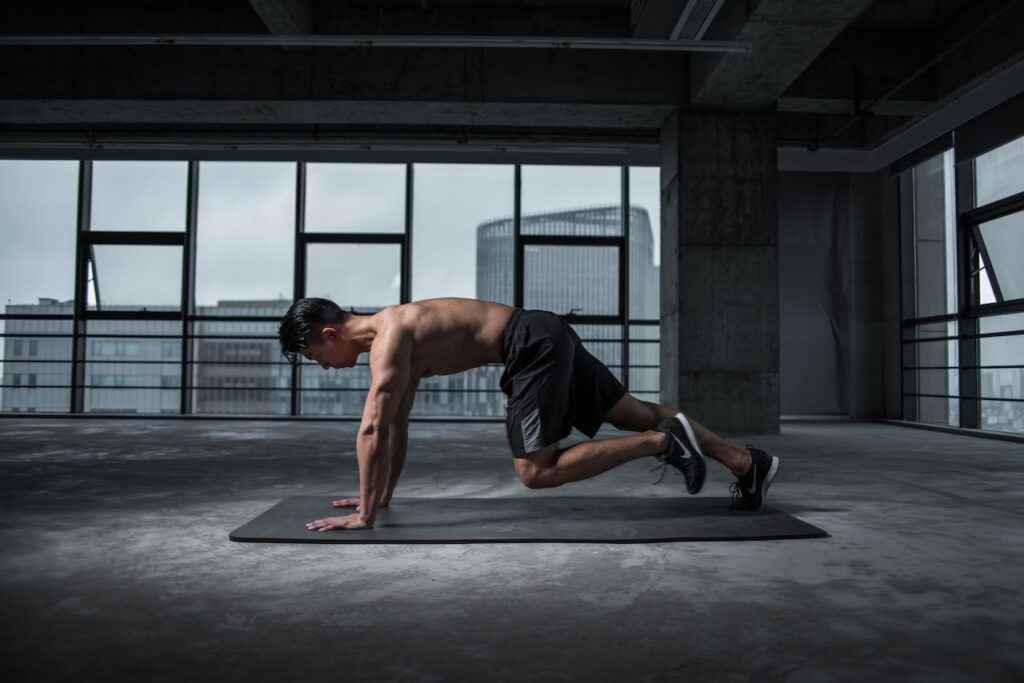Creating a Safe Workout Space
One of the first steps to ensuring safety in your home gym is creating a dedicated and safe workout space. Ample space is essential to perform various exercises without hindrance, reducing the risk of accidental injuries. An ideal home gym should have enough room for you to stretch out, jump, swing your arms, and move freely.
Choosing the right flooring is another key aspect of creating a safe workout environment. Home gym flooring needs to be sturdy and slip-resistant to provide a secure base for your exercises. Rubber mats, foam tiles, or specially designed home gym flooring can absorb shock, prevent slipping, and protect your floor from potential damage from dropped weights.
Ready to create your dream home gym? Get started with our comprehensive guide.

Proper Use and Maintenance of Home Gym Equipment
Understanding how to correctly use your home gym equipment is crucial for safety and effectiveness. Each piece of equipment, whether it’s a dumbbell, resistance band, or a cardio machine, comes with its specific usage guidelines that need to be adhered to prevent mishaps and ensure optimal benefits.
Routine maintenance of your gym equipment is equally important. This includes cleaning equipment to prevent bacterial buildup, checking for any signs of wear and tear, and promptly addressing any issues. Regular maintenance extends the life of your equipment and keeps them safe to use.
No gym equipment? No problem! Get started with bodyweight exercises.
The Importance of Correct Exercise Form and Technique
Correct exercise form and technique is non-negotiable when it comes to safe and effective workouts. Incorrect form not only diminishes the efficacy of your workouts but can also lead to strain or injury. For instance, performing squats or deadlifts with improper form can put undue stress on your lower back, potentially causing serious injuries.
Some common mistakes include lifting weights that are too heavy, not fully extending or contracting during movements, and using momentum instead of muscular strength to perform exercises. It’s worth investing time in learning the correct technique, either through reliable online resources or by seeking professional advice. Remember, in strength training, quality always outweighs quantity.
Recognizing and Respecting Your Body’s Limits
It’s essential to listen to your body and respect its limits. Overtraining can lead to burnout, injury, and decreased immune function among other negative effects. Symptoms like excessive fatigue, mood swings, disrupted sleep, persistent soreness, or decreased performance can signal that you’re pushing yourself too hard.
To avoid overtraining, establish a balanced workout routine with sufficient rest periods. Also, don’t shy away from modifying exercises or using lighter weights when needed. Remember, every individual’s fitness journey is different and progress takes time. Slow and steady wins the race in the world of fitness.
Injury Prevention and First Aid
Injuries are a potential risk in any physical activity, and home workouts are no exception. Some common home gym injuries include strains, sprains, fractures or bruises caused by falling weights, incorrect form, or inadequate warm-up.
Prevention is always better than cure. So, ensure you start each workout session with a warm-up to prepare your body and end with a cool-down to aid recovery. Maintain correct form during exercises and keep your workout space clutter-free to prevent accidents.
Despite all precautions, minor injuries can still occur. A basic first aid kit – equipped with antiseptic, bandages, ice packs, and over-the-counter pain relievers – is a good preparation for such instances.
Nutrition and Hydration: Key Aspects of Workout Safety
Proper nutrition and hydration play a critical role in ensuring a safe workout. They provide the necessary fuel for your workouts and aid recovery.
Pre-workout meals should focus on carbohydrates for energy, along with some protein for muscle repair and growth. Post-workout meals should be rich in protein and also include carbohydrates to replenish energy stores.
Staying adequately hydrated is equally important. Dehydration can result in dizziness, muscle cramps, and fatigue, impairing your workout performance and safety. Remember to drink water before, during, and after your workout to keep your hydration levels in check.
Conclusion
Working out in the convenience and comfort of your own home can be both rewarding and challenging. However, your safety should always be paramount. From creating a safe workout environment, understanding the use and maintenance of your equipment, and maintaining correct exercise form to listening to your body’s signals, being mindful of potential injuries, and ensuring proper nutrition and hydration – each aspect plays a crucial role in your home workout safety.
As you embrace the home fitness journey, make safety your priority. Because the true strength lies not just in physical prowess, but in the wisdom of taking care of one’s health and well-being. Happy and safe workouts to you!
